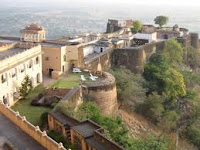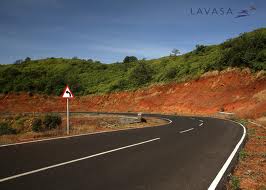Rajasthan is a desert jewel, cultural, historical, traditional, custom, imperial and royal state of India. The heritage tradition of hospitality of Rajasthan is really unforgettable. People are helpful and kindhearted and they assist the tourists in all possible ways. Precious custom and culture has made this state one of the most attractive tourist destinations in the world. The heritage and royal state of Rajasthan has loads of attractive things to offer the tourists. Idealistic stylish palaces, amazing forts, marvelous architectural antique temples, marvelous havelis with chromatic, murals,and miniature paintings, colorful festivals and fairs etc. are the prime assets of Rajasthan. Every year a large number of tourists comes to this state from all over the world visit this this state.
History of Rajasthan
During the period of 700 AD Rajput clans emerged in Rajasthan and began to hold their control and to spread their influence over various parts of Rajasthan. Before the emergence of the Rajput clans, the city was a part of various small states. It was also a part of the Mauryan Empire. Hunas, Malavas, Guptas, Saka, Kushans, Satraps, Yaudhyas, Malavas and Arjunyas are some of the other republics which ruled this region.
In the history of Rajput clans, the dominance was during the period of 8th-12th century AD. At this period of 750-1000 AD, Rajasthan and most part of the northern India was governed by the Pratihars. During 1000-1200 AD, the ancient land of Rajasthan witnessed the dominance struggle between Chlukyas, Parmars and Chauhans.
During 1200 AD the most parts of Rajasthan was under the Muslim rulers. Ajmer and Nagaur were the main centers of powers. Ranthambhor was under their control too. From the very beginning of 13th century, Mewar came out as the most prominent and powerful state of Rajasthan.
Before the control of Mughal emperor Akbar, Rajasthan was never been politically united. Akbar first established a united part of Rajasthan. The Mughal power started to drop after 1707. After the declination of the Mughal Empire, the Marathas became the rulers of Rajasthan.
In 1755 Marathas took their control over Ajmer. In this period Rajasthan was also attacked by the Pindaris. After that, the British Government finished the alliance agreements with about all the territories of Rajputana in the year 1817-18.and from that time Rajasthan was known as Rajputana till the pre independence time. After being independent in the year 1947, the state attained its present name Rajasthan.
Places to Visit in Rajasthan
The city was found by Raja Prithviraj Chauhan in the 7th century and it is located 120 km or 78 miles west of Jaipur..
Ajmer is famous for the “Dargah of Khwaja Muin-ud-din Chisti” (1142-1236) and “Ana Sagar Lake”. The city is also well known for the famous Sophia college boarding schools and Mayo college .
Alwar is a beautiful city located 143 km from Jaipur, 164 km from Delhi,.160 kms from Udaipur.
Banswara
Located 160 kms from Udaipur and 527 km from Jaipur, Banswara is a small town which is famous for the Baneshwar Festival.
Located at 175 kilometer from Jaipur & 185 kilometer from Delhi, the city is known for the base on the way of Agra as well for the Keoladeo Ghana National Park or bird sanctuary. Bharatpur used to be ruled by the Jats. The museum and old fort are also there.
The city of Bikaner is situated in the way of Jaipur to Jaisalmer and it was founded by Rao Bika in the 15th century. The city is well known for carpets, durries, mojari slippers and hand printed lamp shades. Tourists can visit the Junagarh Fort located in the city and can ride the camel ride.
Bundi is located at 40 km from Kota and 206 km from the city of Jaipur. the city is enclosed by the Aravalli hills on the three directions and also confined by a huge wall with four entrances.
Chittorgarh
The city of Jaipur was found by Bappa Rawal in the 8th century. The city is located 110 km away from the city of Udaipur and 300 km away from the city of Jaipur. Chittorgarh is famous for the huge 495 feet high and three mile long fort. Mirabai, the saint and poet of the 16th century was from this city. This city is also known for Rani Padmini, kirtistambha and Vijaystambha. The fort of Chittorgarh has also witnessed jauhars and three brutal seizes.
Dungarpur also known as the city of hills. The city was found in the 13th century and it is situated at 110 km south of the city Udaipur. Juna Mahal is one of the reknowned tourist destinations of this city and it is adorned with beautiful paintings, frescoes, glass inlays and mirror works. The government of this state runs the Somnath temple and the Rajmata Devendra Kanwar Museum.
Jaipur is known as the "Pink City". Located 250 km away from Delhi, the city the capital of Rajasthan as well the starting point of the tour to Rajasthan. The city is famous for Jantar mantar, Amber Fort, Hawa mahak, Sisodia Rani's bagh and City Palace. The place is also famous for the block prints for the textiles, handicraft items, semi precious jewelry and Man dhir.
Situated at 250 km away from Jaipur, the city of Jodhpur is also known as the “Blue City”. Jodhpur was found by Rao Jodha and it is well known for Umed Bhawan Palace, Mehrangarh Fort, handicrafts and museums.
Located 275 Km away from Jodhpur, the city is also called "Golden City". The city was founded by Rao Jaisal. Jaisalmer is well known for the sand dunes, Patwon-ki-haveli and also ideal for safaris and camel rides.
Situated at 87 km from Kota and 335 km from Jaipur, the princely state Jhalawar was established in the 1838 A.D.
This city is situated 131 km away from Ajmer and 240 km away from Jaipur. The city is known for the Dussehra Mela.
Located 85 km away from Udaipur, Kumbhalgarh is well known for Kumbhalgarh Wildlife Sanctuary.
Located 27 Km away from Abu and 190 Km away from Udaipur is a hill resort of Rajasthan. The city is well known for Guru Shikar, Dilwara Temple and Nakki Lake.
48 km from Udaipur in Rajasthan lies the popular relegious place, Nathdwara.
Ranakpur is one of the most important pilgrimages of Jainism. The city is also the home to the beautiful temples in the Aravali ranges
The city of Rohet is famous for the local traditions and cultures. It is situated 160 km away from Udaipur and 212 km away from Indore.
Sariska
Sariska is well known for a Tiger Reserve Sanctuary and it is situated at 35 km away from Alwar and 110 km from Jaipur.
Ranthambore
Ranthambhore is well known for the Tiger Reserve Project, Ranthambore National Park. It is located at 11 km away from Sawai Madhopur and 135 km away from Jaipur.
The Amer Palace was built by Raja Man Singh in the 16th century. The palace is an amazing blend of both Mughal and Hindu architecture. Rajputs have used the palace from 16th century till the year 1727 for both defense purposes and for the purposes of residence.
Located at the capital of the state Rajasthan, the Jaipur City Palace is one of the chief palaces. It is a wonderful fusion of the conventional Mughal and Rajasthan architecture. The huge complex of the palace appoints one seventh part of the Jaipur city.
Also known as 'Holy Dargah', the place is one of the most divine Muslim shrines of India. Admired by both Muslims and Hindus, the dargah is the grave of a Sufi saint Khwaja Moin-ud-din Chisti, who was from Persia and donated his life for the the betterment and service of the downtrodden and poor.
The Fateh Sagar Lake is located at Udaipur and in the north part of the Lake Pichola. Maharana Jai Singh built the lake in the year 1678 by as a enduring storage reservoir. Three sides of the lake were enclosed by holls and one side was by Pratap Memorial, the lake presents a charming scenery.
The wonderful mansions made of sandstone of the wealthy merchants of Jaisalmer are said as 'havelis'. In most of the elaborated homes a poem is etched out in the sandstone with various pains and details, together pieced and carved in various patterns, and they are also loud and lavish in nature,
“Hawa Mahal” or “Palace of the Wind” was built up by Maharaja Sawai Pratap Singhon 1799. The Hawa Mahal is basically an expansion of the women's chambers. Soon, the mahal has become one of the great landmarks of Punjab.
Jantar mantar is the name of any magical device in Sanskrit. The building was named after Jantar Mantar because of the big masonry appliances, which are kept in this palace to check 'the harmony of the heavens' appreciated by the Sawai Raja Jai Singh II. The building took seven years to get completed.
Puskar
Pushkar is a great Hindu pilgrimage and it is said that a single dip in the holy lake is similar to the visit of four Hindu Shrins known as the Chaar Dhaam'. The three sides of this beautiful loke is enclosed by the hills and the other side is by sand dunes. Every year a cattle fair is held in this place in October or November.
Sahelion Ki Bari
This place is also known as the Garden of the Maids of Honor' was a beautifully planned garden along with shady walks and extensive lawns. The garden was located on the bank of Fateh Sagar Lake and it used to be reserved for those royal ladies who used to go for a stroll. Maharana Sangram Singh had constructed this garden in the 18th century.
Shrinathji Temple
Located 48 km away from Udaipur, the Shrinathji temple is situated amidst some idyllic hills. It is basically a temple of lord Krishna and his structure hollowed out of a black marble. According to the experts, this temple is the second most prosperous temple in the world.




















































